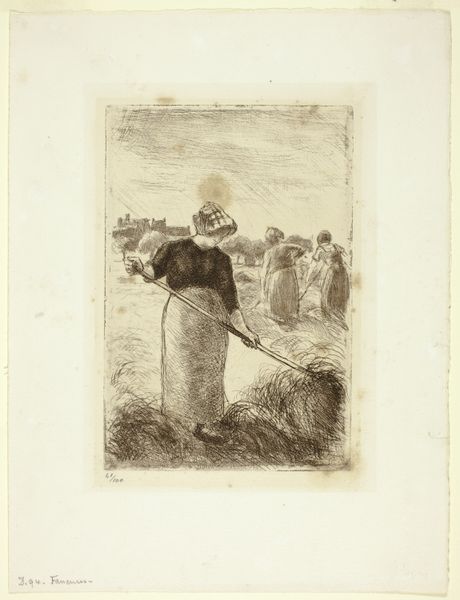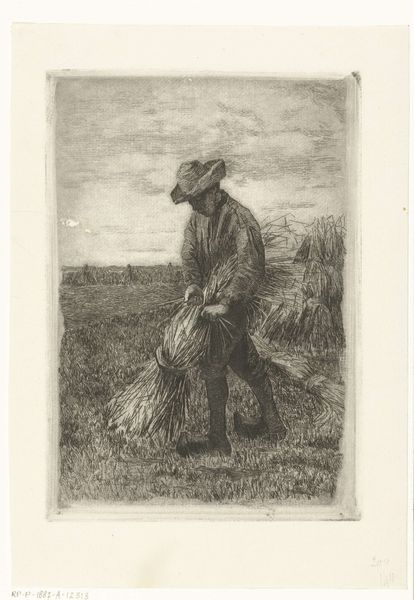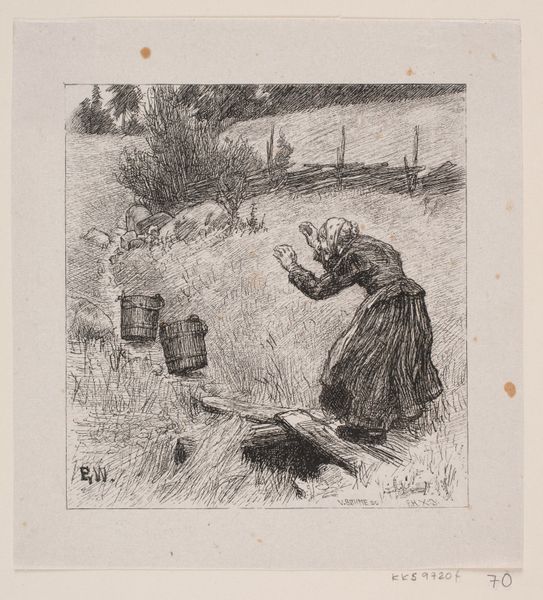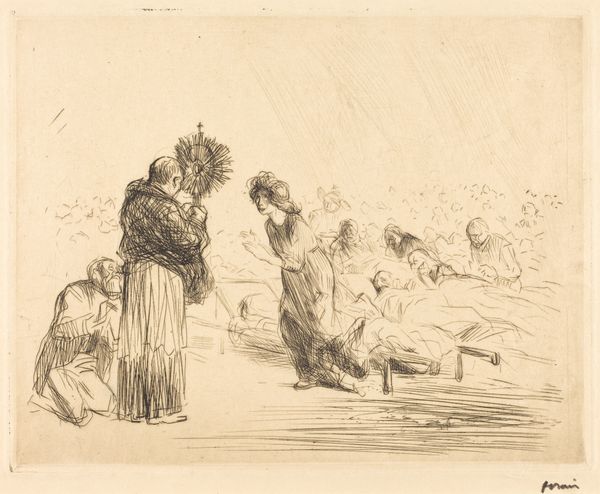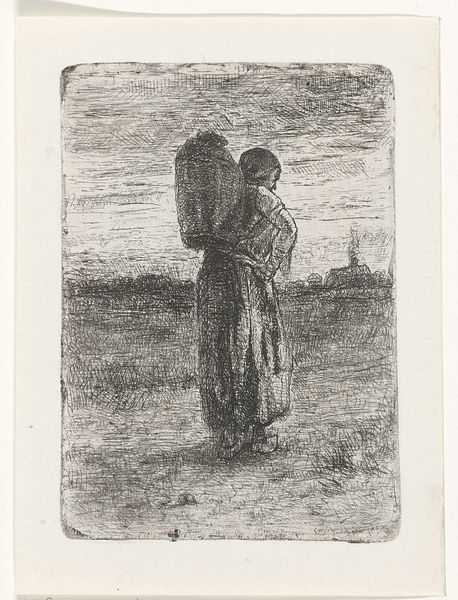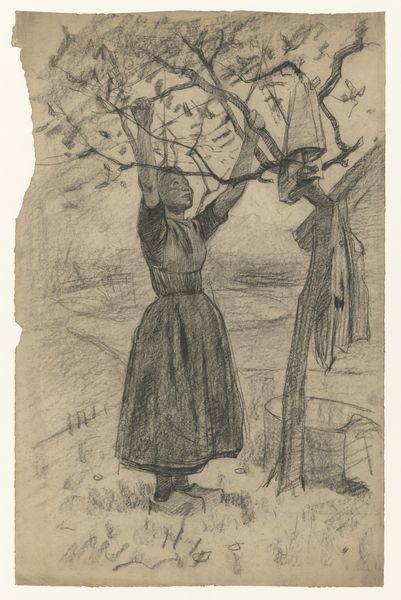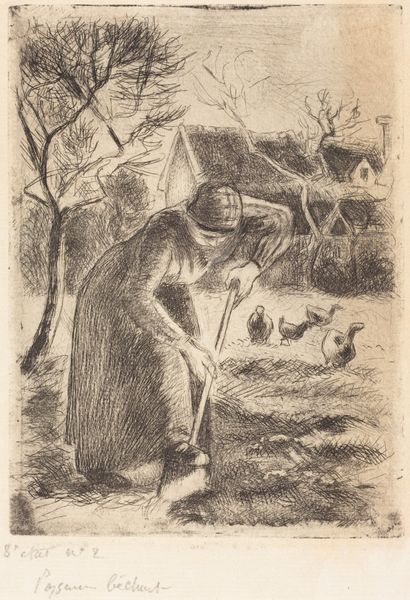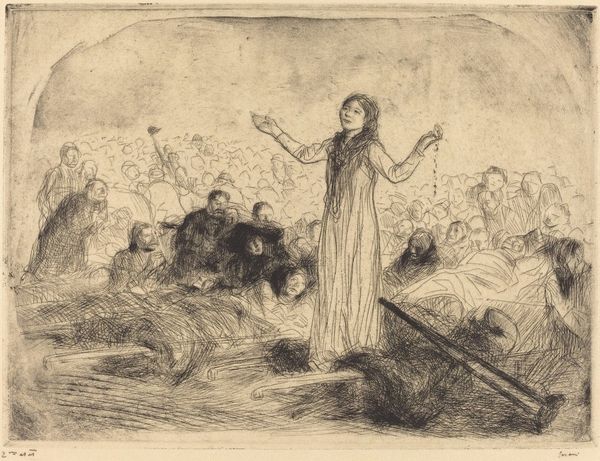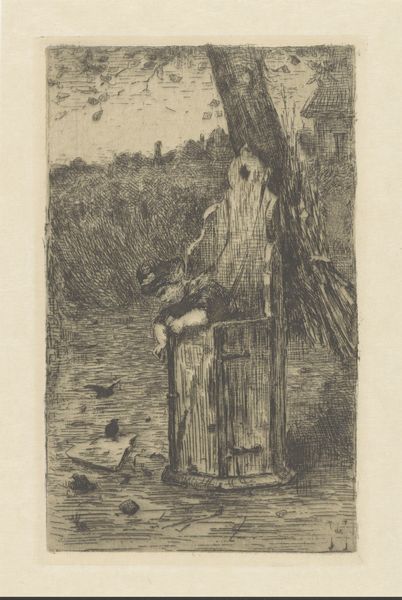
print, etching
# print
#
impressionism
#
etching
#
landscape
#
figuration
#
line
#
genre-painting
Dimensions: height 198 mm, width 133 mm, height 250 mm, width 162 mm
Copyright: Rijks Museum: Open Domain
Editor: This etching, "Three Women Haymaking" by Camille Pissarro, created in 1890, gives off a subdued feeling. The figures seem burdened by their work. What strikes you when you look at it? Curator: This print provides a glimpse into the lives of rural women and the social realities of labour at the end of the 19th century. Note how Pissarro doesn't idealize their toil, but rather presents a straightforward depiction. How do you think this choice relates to the broader social and political context of the time? Editor: It’s interesting how you point out the lack of idealization. Perhaps it's Pissarro's way of acknowledging the working class, offering a truthful portrayal instead of romanticizing rural life. Curator: Exactly. The print media also becomes important here. Consider that prints like these would have been circulated and consumed differently than paintings. Etchings made art more accessible, contributing to a shift in the public role of art. They were meant to be easily shared. What is your feeling about this potential easy share? Editor: It allows a larger segment of society to access and perhaps connect with images of laborers, thereby fostering discussions on the prevalent social issues. This shift sounds democratizing. Curator: I agree, and by placing the labourers as the main subjects of the print, Pissarro challenges traditional hierarchies of artistic representation, don’t you agree? Editor: I do. Seeing this artwork from a social perspective really makes me appreciate Pissarro's commentary and the medium's capabilities. Curator: Absolutely, by studying the print you unveiled a small portion of this period!
Comments
No comments
Be the first to comment and join the conversation on the ultimate creative platform.

